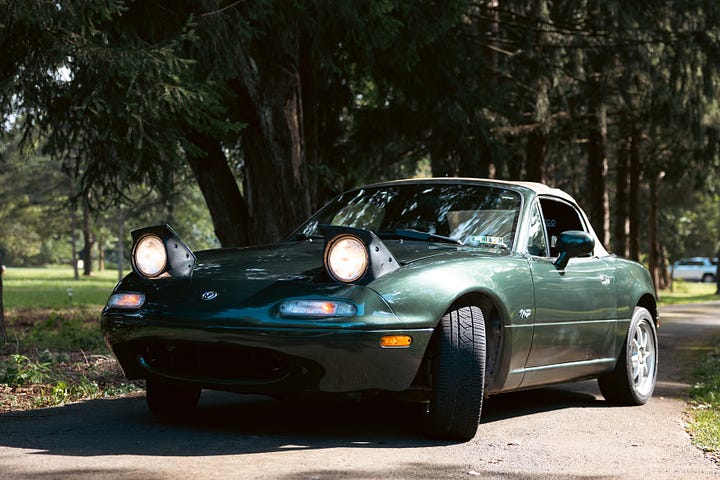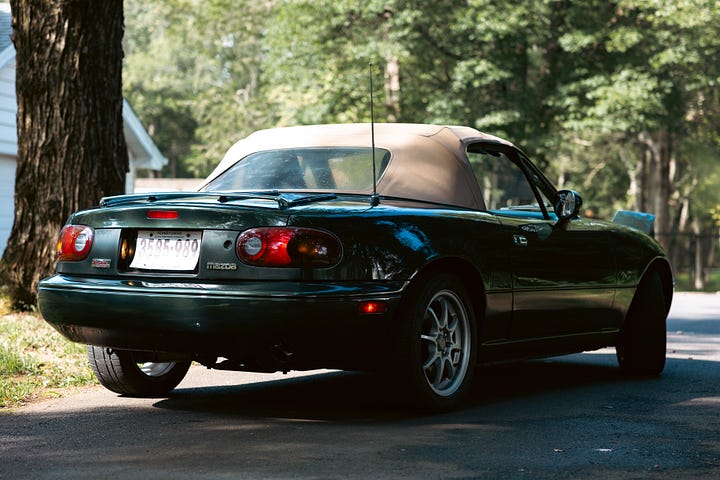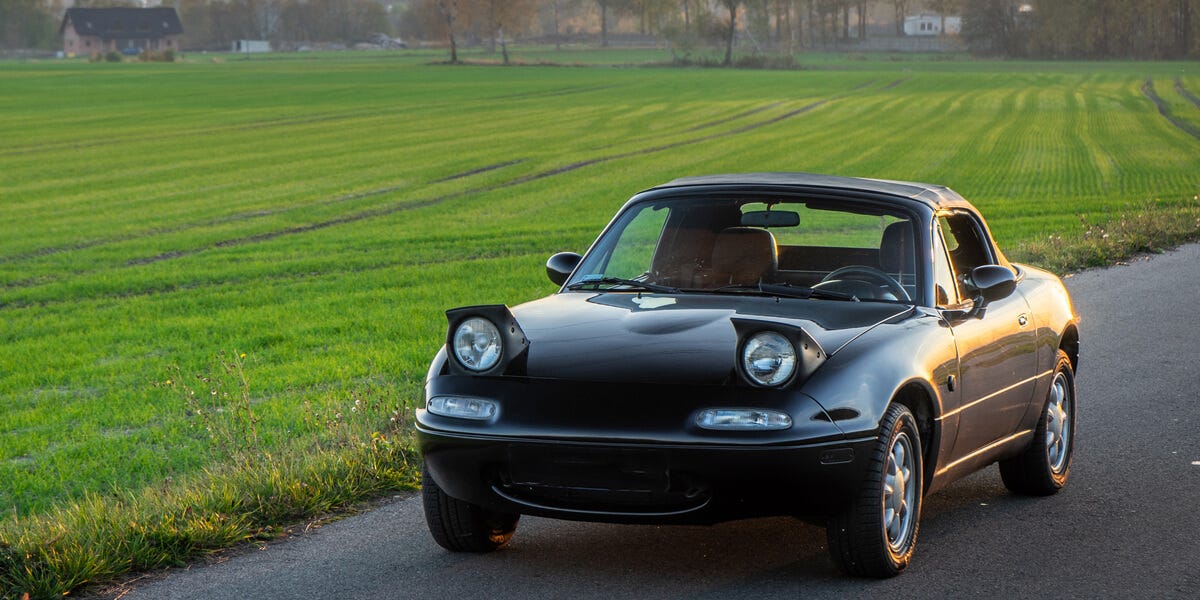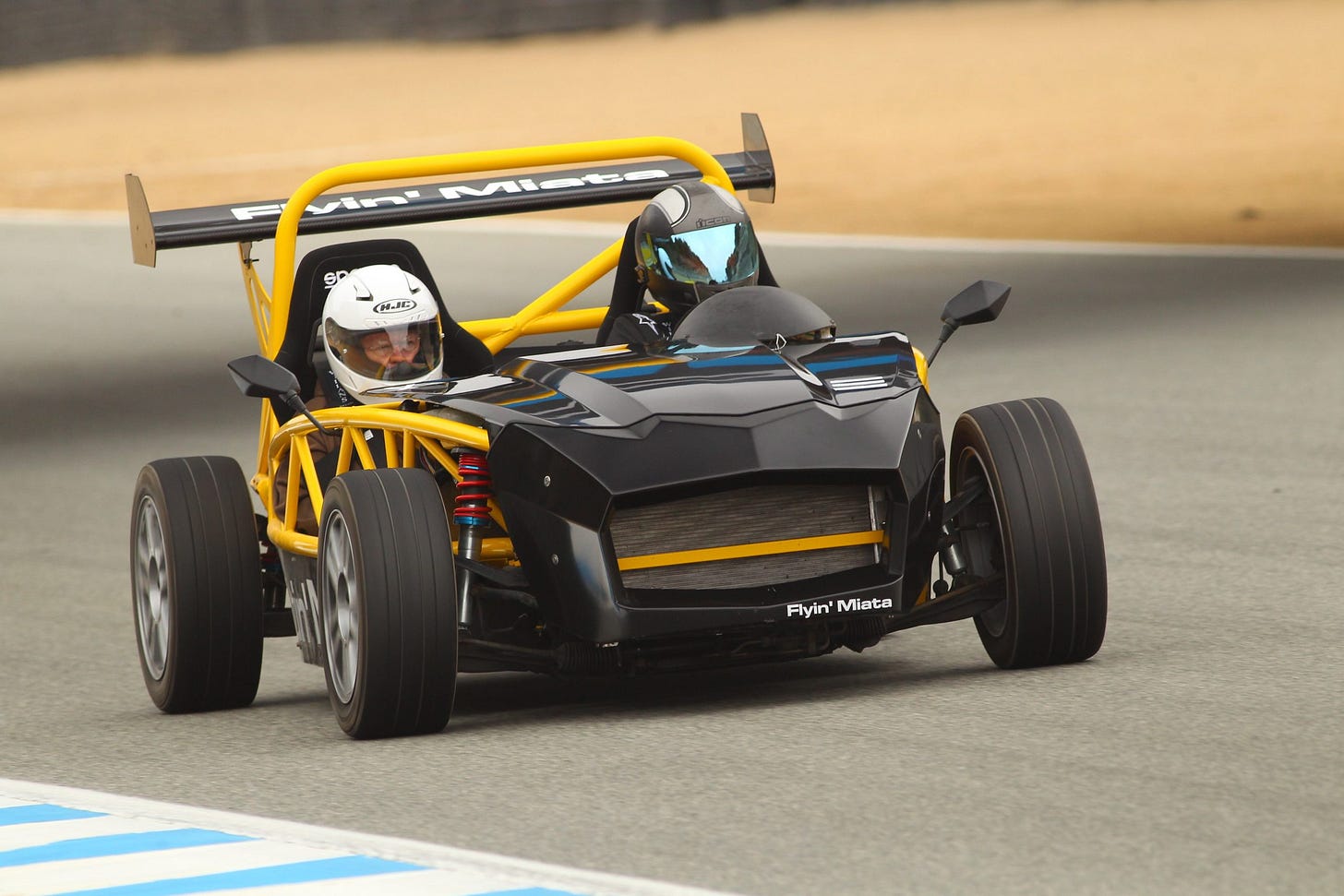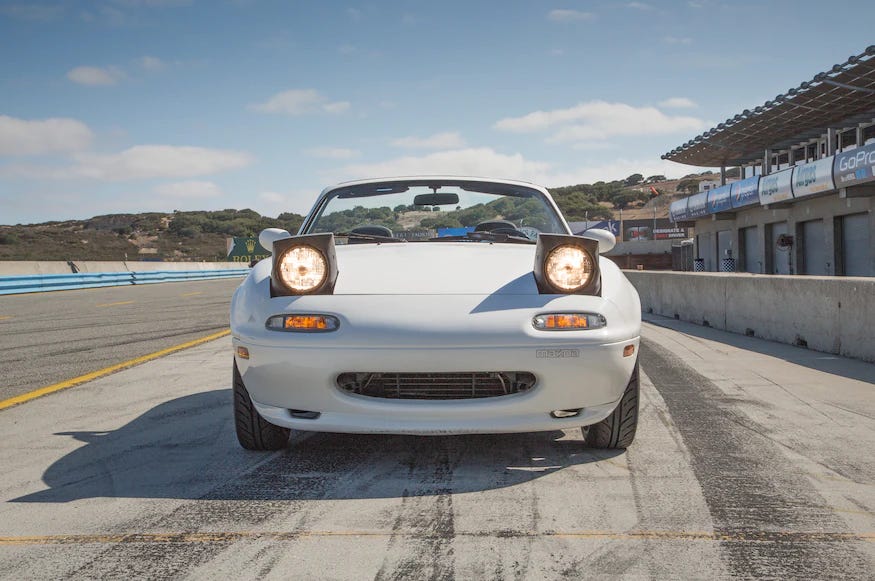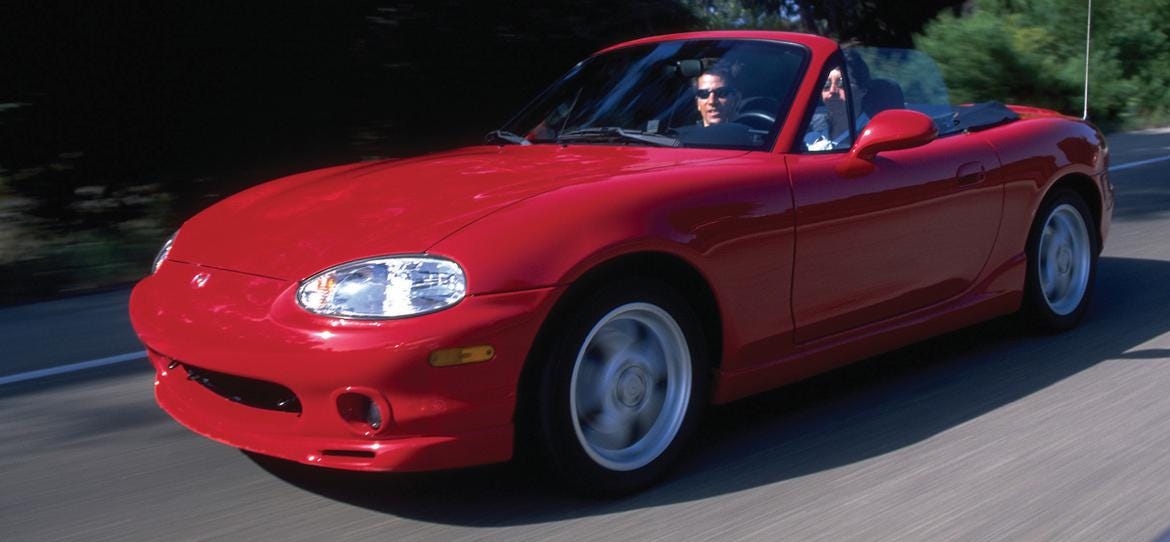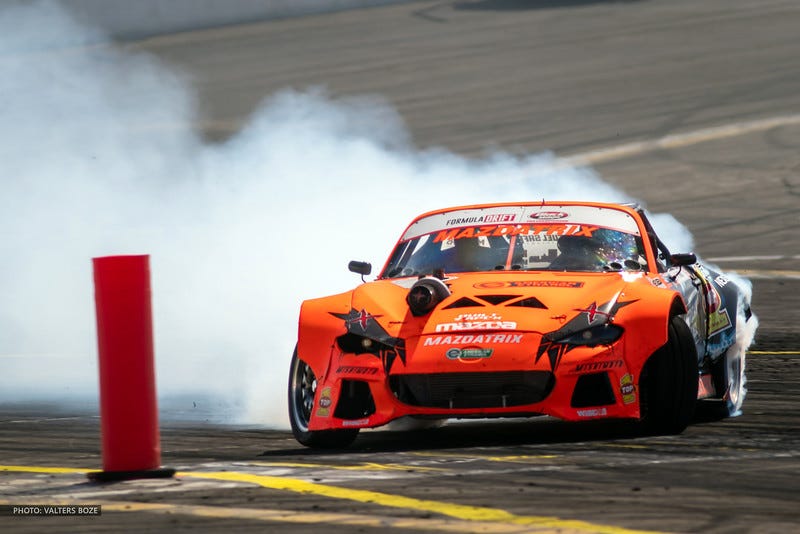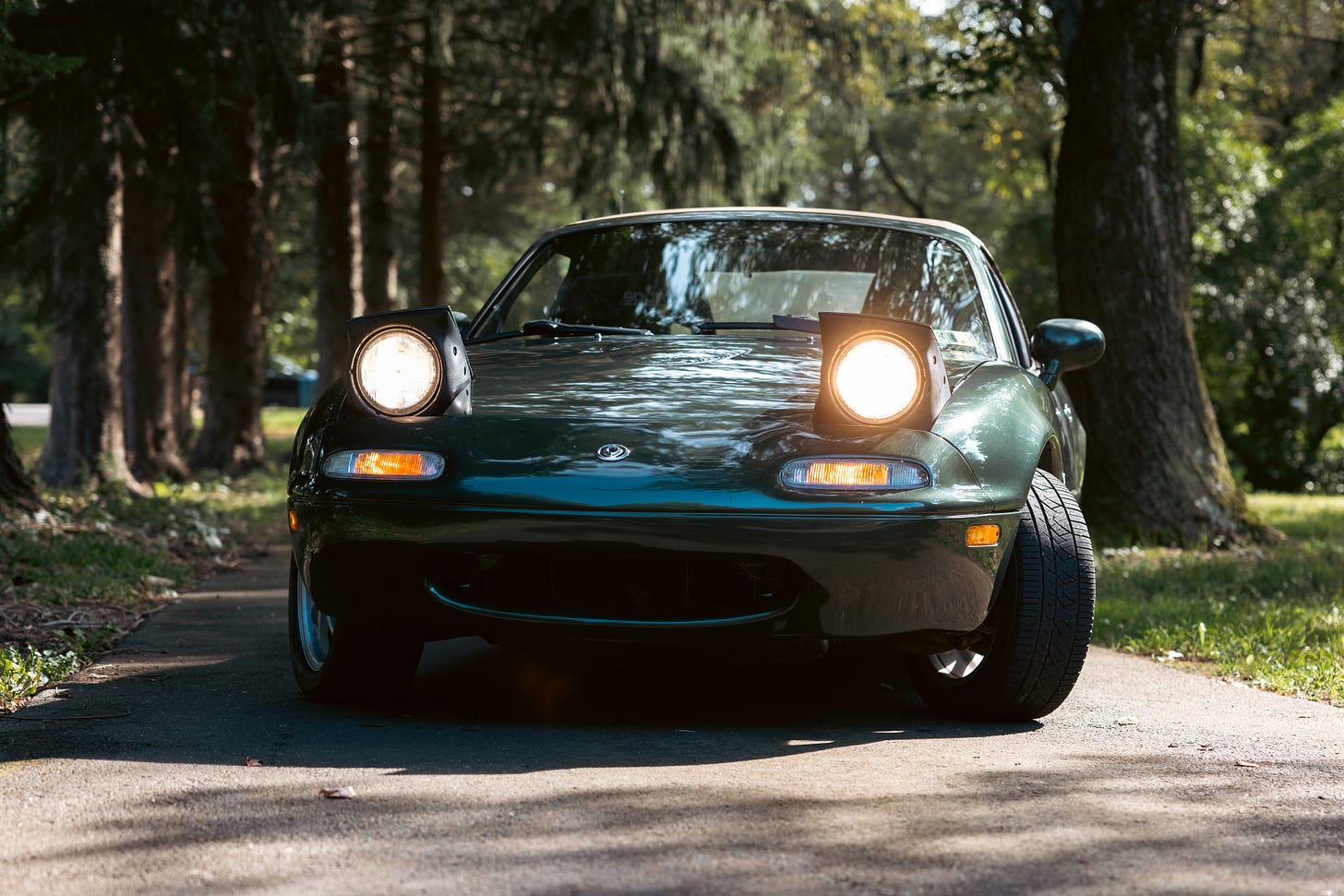Buying a Future Racecar
Why I decided to buy a '97 Miata
I’ve enjoyed a number of exciting vehicles so far. I’ve owned some motorcycles, off-road vehicles, and performance-oriented cars. I’ve modified most of these and I’ve been to the track a handful of times. Both of these things made me curious about building a dedicated track car. I’ve particularly been drawn to cars with such a rich aftermarket that they’re called platforms.
So in my exploration, I considered a number of platforms, I have a bunch of experience with Audi, but I wanted a more traditional rear-wheel drive, manual sports car. Audis are generally AWD cars, and manual variants are rarer due to a pretty good dual-clutch transmission. BMW seemed like a good iteration, I could get something newer and treat it as a normal second car for a few years and then turn it into a track car later. Or I could get something older and begin building immediately. I ended up shying away from this option for a few reasons.
Luxury German cars start their lives as a racecar much heavier. This means you’re going to run through consumables like brakes, and tires much more quickly. And you have to make more power to be competitive.
You’re paying a tax for the brand name at every interaction. Performance upgrades cost more when you want to go faster, and replacement parts cost more when you go too fast and break things.
You’re more often fighting the manufacturer who wants you to bring the car into a dealership. When you’re changing rear brakes on vehicles that have electronic parking brakes you sometimes have to put the car into a service mode. On a Ford vehicle, this involves pressing and holding a couple of buttons while you start the car. On Audis, this procedure can only be done either through a dealer or by using a grassroots OBD2 bluetooth device and app which costs a micro-transaction for a variety of such services. There are also generally more luxuries in your way which the removal of may not be handled particularly gracefully by the car (racing seats and steering wheel come to mind).
After mulling this over I knew I was either choosing an American pony car (Mustang / Camaro / Corvette) or a Japanese Tuner (Miata, Z, BRZ, Supra). This was a tough choice as I’m a die-hard American, and I presently have an F-150 and surely some of that mechanical familiarity would transfer over to a Mustang. Chevy LS swaps are also pretty sick. But ultimately I opted for the foreign import for the lower cost of entry. I was particularly blown away by what I saw surrounding the Mazda Miata.
Depending on your criteria you can probably get into a Miata for as low as $4k. To most Miata grey beards this is an all-time high price, it’s not uncommon to hear about someone getting a basic Miata for $1k a couple of years ago. This leaves plenty in the build department. This also leaves plenty in the replace-the-car-if-I-destroy-it department.
And boy can you build. Anything you saw them do in a Fast and Furious movie you can do to a Miata. Almost every part is widely available and inexpensive from a restoration perspective. There are a number of companies dedicated to providing specifically the Miata with aftermarket parts like Flyin’ Miata. There’s a rich knowledge base in forums and on YouTube. Donut Media (one of the largest car YouTube channels) did a series of videos building a track Miata. There are a number of performance strategies being explored including:
Swapping engines to the reliable and more powerful Honda K-Series motor
Or dropping ~35% of the weight of the Miata to create the Exocet
The Miata is a “generation” based car, like the Jeep. In its lifespan since 1990 there have been 4 generations of Miata: NA (‘90-’97), NB (‘98-’05), NC (‘05-’15), ND (‘15-). They all have a very similar personality:
Very light
Great handling
Not that powerful
The price gets rather high in the NC & ND range and I’m not sure it’s as compelling a purchase. The NA and NB Miatas however, are maybe the best value in the niche I’ve described so far. A great value means more room in the budget for building (and replacing the car if I go into a wall at 110mph).
There is however a key distinction between the NA and NB.
The NA Miata has pop-up headlights which make the car cute and charming.
The NB Does not.
So NA Miata it was, and NAs are a little rare in my area. But even within the NA Miata there’s a faction. During ‘90-’93 the Miata used a 1.6L engine, ‘93 onwards they used a 1.8L engine in the US (~10% more powerful). I found that this engine has a ~$1k premium. The second performance bit I was looking for was a Torsen Limited Slip Differential. A differential helps your drive wheels rotate at different speeds in turns. In traction-limited settings (off-road or while shredding tires) a normal differential will allow the power to get sucked into the wheel that loses traction, which guarantees that wheel will not regain traction. An LSD helps deliver power to both wheels regardless of traction levels. In my search, an LSD inflated the price of the car another $1k.
And so, for $8750 I picked up a British Racing Green, M-Edition Miata from ‘97 with ~113k miles. The color is rare and is also my wife’s favorite color. Doing a test drive, finding no rust, and seeing an above-average service history sealed the deal for me.
I’m excited to use this blog to share the journey this Miata will take as it is restored, modernized, and upgraded for the race track.
